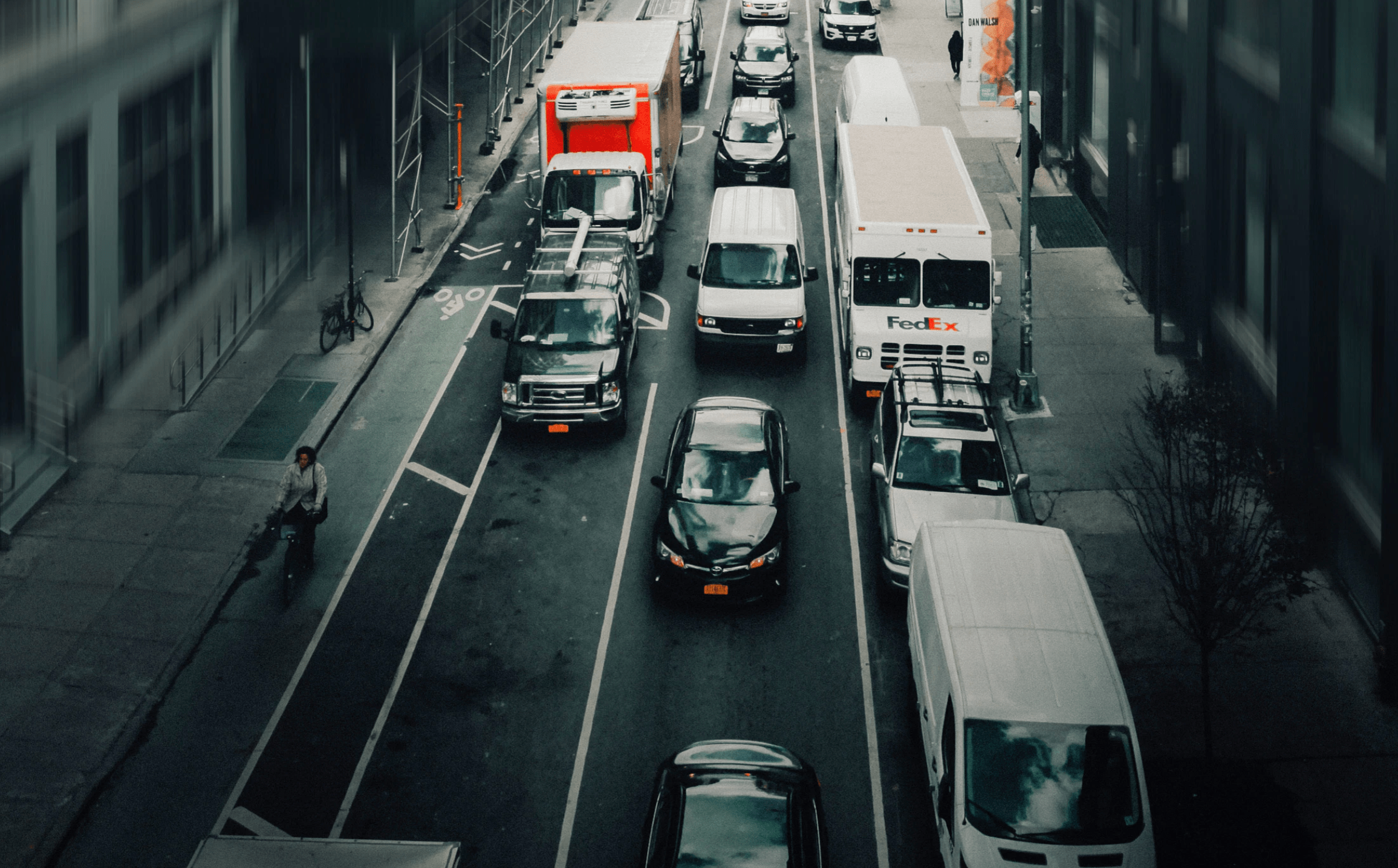Editor's note: This article originally appeared on Carbon Upfront and is republished with permission.
The world is apparently agog that musician Niall Horan recently had to walk to his gig at Toronto’s Scotiabank Arena, saying, “Traffic’s too bad in Toronto so we’re walking to the venue.”
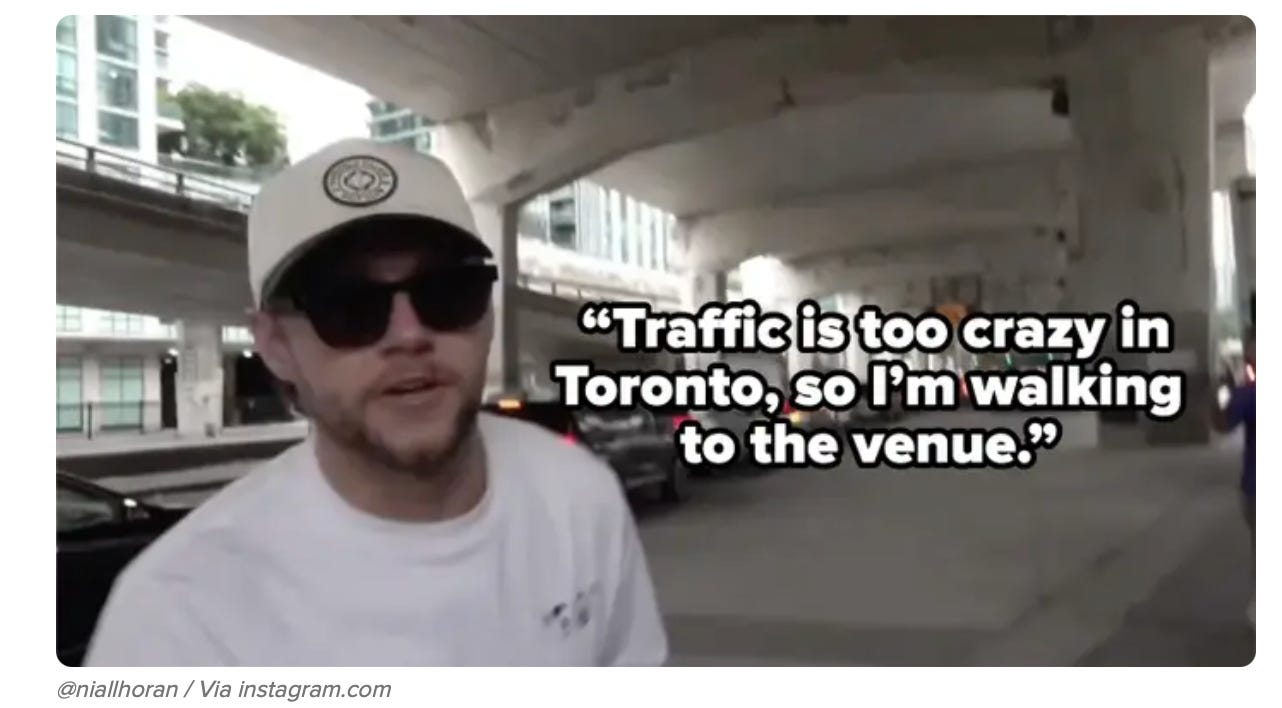
Buzzfeed is on it: “I'm talking about TRAFFIC, baby! Traffic so bad that the pop star had to walk through the city to get to the venue where he was performing that night.” It’s shocking! As Anna Fitzpatrick writes in the Star,
“Based on the coverage, it seemed a real affront. A person — a rich and famous one at that — was unable to drive his car into the dead centre of downtown during rush hour on the Friday before a long weekend without being inconvenienced by the presence of other private vehicles.”
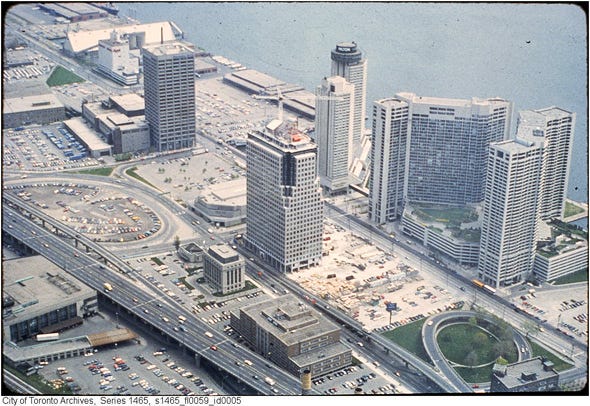
He was also staying at the Westin Hotel, which is all of 300 meters away from the venue, so walking would have been the fastest and easiest way of getting there even if there was no traffic. Look at this photo of the area just 40 years ago, with the Westin at the upper middle (with the now closed round revolving restaurant on top) and the Post Office, now the Scotiabank Area, at the lower left. And in between: acres and acres of glorious parking! An empty expressway! Those were the days!
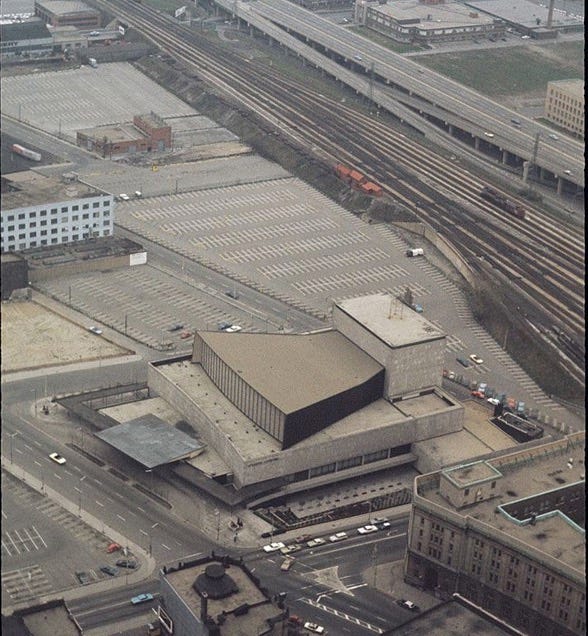
But everyone in Toronto complains about congestion. Drivers of cars complain. Passengers in streetcars complain because drivers of cars are blocking their way. They want it to be like it used to be, before thousands of new residential units and a zillion square feet of office buildings were built, before every corner became a construction site, before people on bikes got a safe place to ride. When the roads belonged to cars and there was always a place to park.
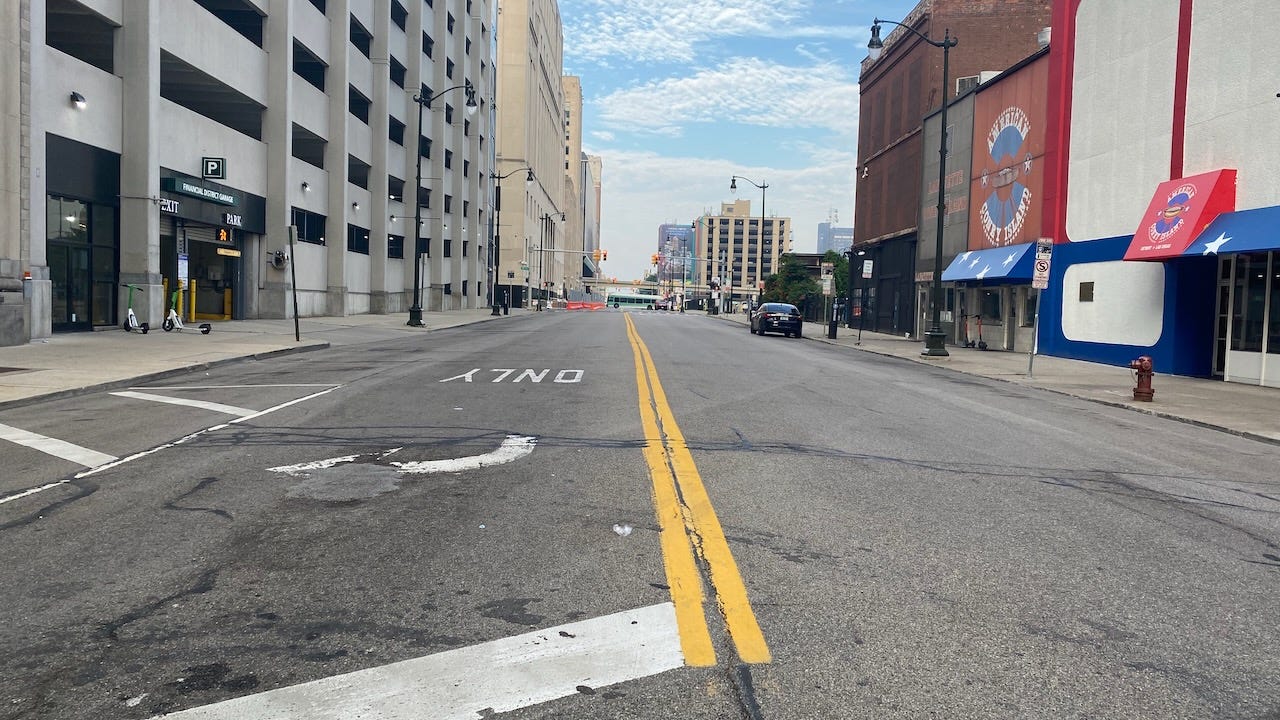
Just like Detroit! I was there a week before Niall Horan had his terrifying walk in Toronto, and I didn’t see any congestion. In fact, I could probably lie down and have a nap in the middle of any street in the middle of rush hour. And the parking! There were lots of lots and lots of parking structures everywhere! It was a drivers’ paradise!
Congestion is annoying, but it can also be a sign of a successful city. One study, Revisiting the relationship between traffic congestion and the economy, found “Economic productivity is not significantly negatively impacted by high levels of traffic congestion. In fact, the results suggest a positive association between traffic congestion and per capita GDP as well as between traffic congestion and job growth.” The authors tell CNU that congestion helps build better cities:
“Without traffic congestion, there would be less incentive for infill development, living in an location-efficient place, walking, biking, and transit use, ridesharing, innovations in urban freight, etcetera. And if your city doesn't have any traffic congestion, there is something really wrong.”
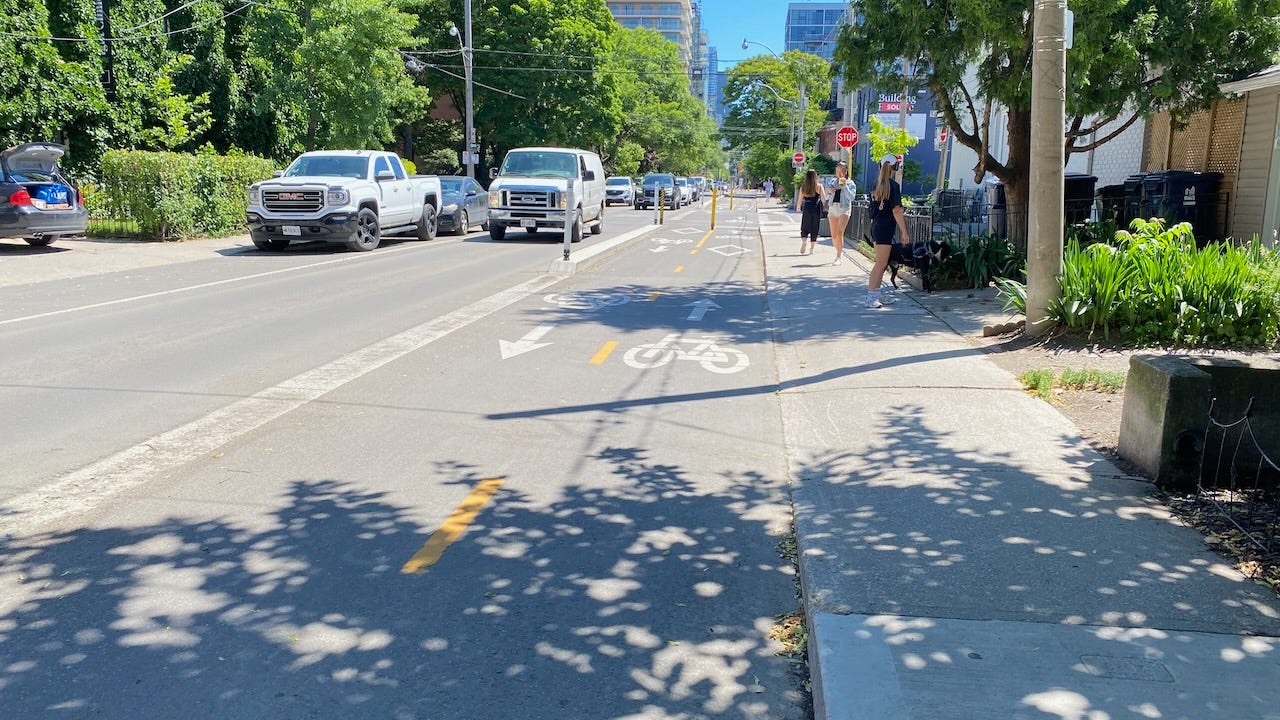
I can personally attest that good bike lanes are a wonderful incentive to ride instead of drive, and more people are doing it all the time in Toronto. And despite drivers' complaints, the bike lanes are designed to reduce congestion by providing a safe alternative to driving.
Another study by Mattias Sweet of McMaster University, Traffic Congestion’s Economic Impacts: Evidence from US Metropolitan Regions, is summarized in Bloomberg: “Many of the American cities with the worst congestion also have the largest economies. And, to a certain extent, congestion is a sign that an awful lot of people have jobs to get to, which is indisputably a good thing.” Sweet writes:
“Results suggest that the strict policy focus on travel time savings may be misplaced and, instead, better outlooks for managing congestion’s economic drag lie in prioritising the economically most important trips (perhaps through road pricing) or in providing alternative travel capacity to enable access despite congestion.”
Charles Marohn of Strong Towns explains that between the space and the financial constraints, we can’t fix congestion with more roads. “We’re left with only one viable response: We have to reduce the demand for trips.”
“What do options look like? They look like the ability to walk to the corner grocer instead of driving to the big box store. They look like the ability to bike to a neighborhood school instead of getting dropped off at the mega campus on the outskirts of town. They look like the ability to work from home and have your shopping delivered to you (and your neighbors) instead of each of you taking a trip on your own.
In fact, congestion drives the demand for options. The more stifling the levels of congestion one must pass through to get milk at the big box grocer, the more someone will value a corner grocer that can provide the same product. This is true over the many dimensions of our lives, and that truth can utterly transform our economy, making our neighborhoods not only more productive but more responsive to our needs.”
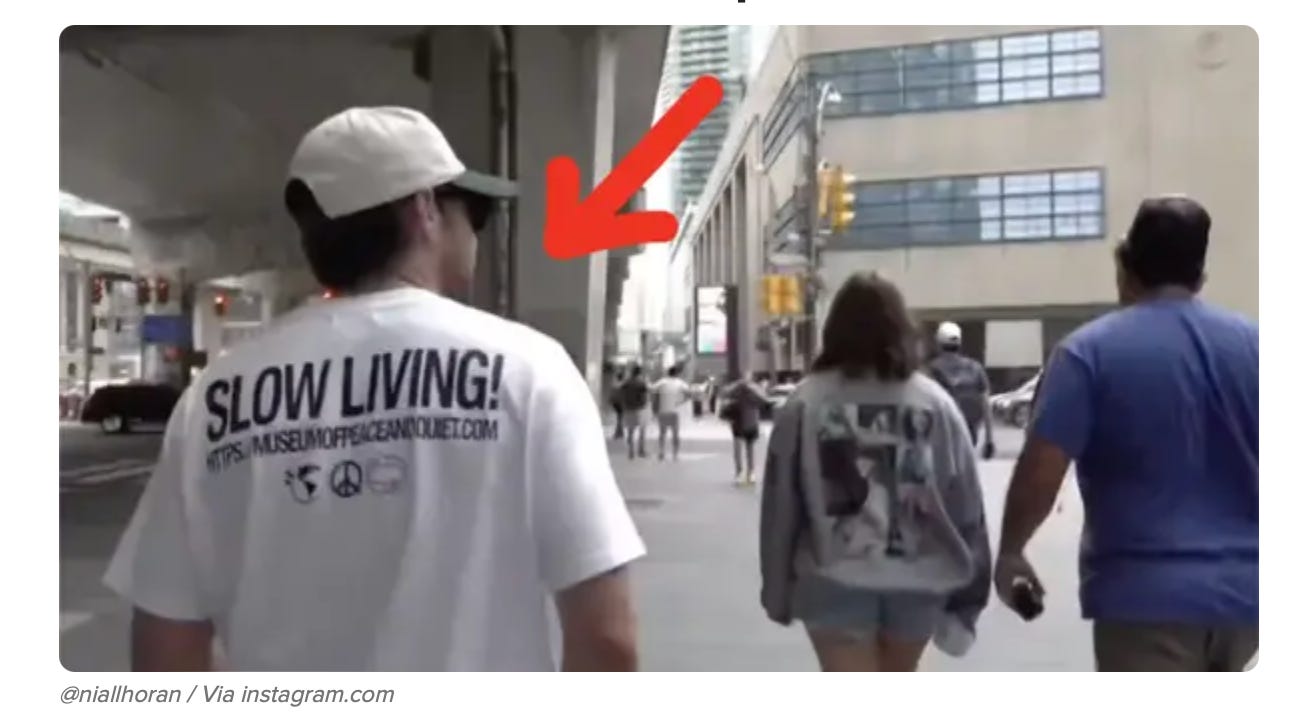
Niall Horan is a demonstration of Marohn’s thesis: congestion encouraged him to walk. It was faster and more convenient than the alternatives. Judging by the message on his T-shirt, he probably didn’t really object. I do wish that his walk hadn’t been through such an ugly part of the city; Anna Fitzpatrick concurs.
“That Horan was unable to drive to his destination wasn’t embarrassing; that the alternatives were so unattractive was. The answer to our traffic problems, in other words, will not be found in giving more space over to private vehicles but in ceding it instead to sustainable, equitable, and efficient forms of transit.”
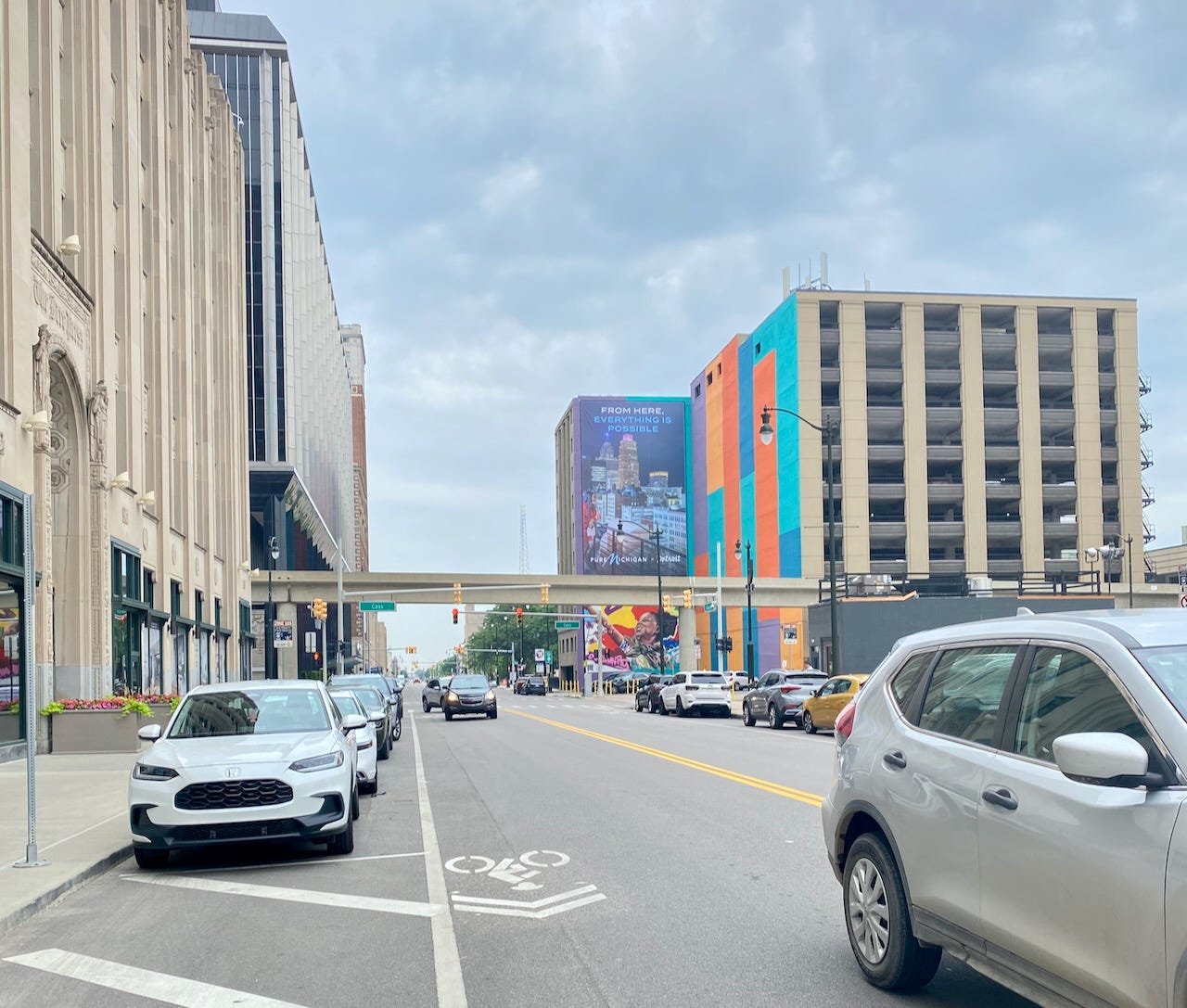
Detroit was a fascinating counterpoint, with sad sharrows instead of proper bike infrastructure, empty parking garages, and a “people mover” devoid of people. People who complain about congestion in Toronto should be careful what they wish for, and perhaps take a trip to Detroit to see the alternative.
